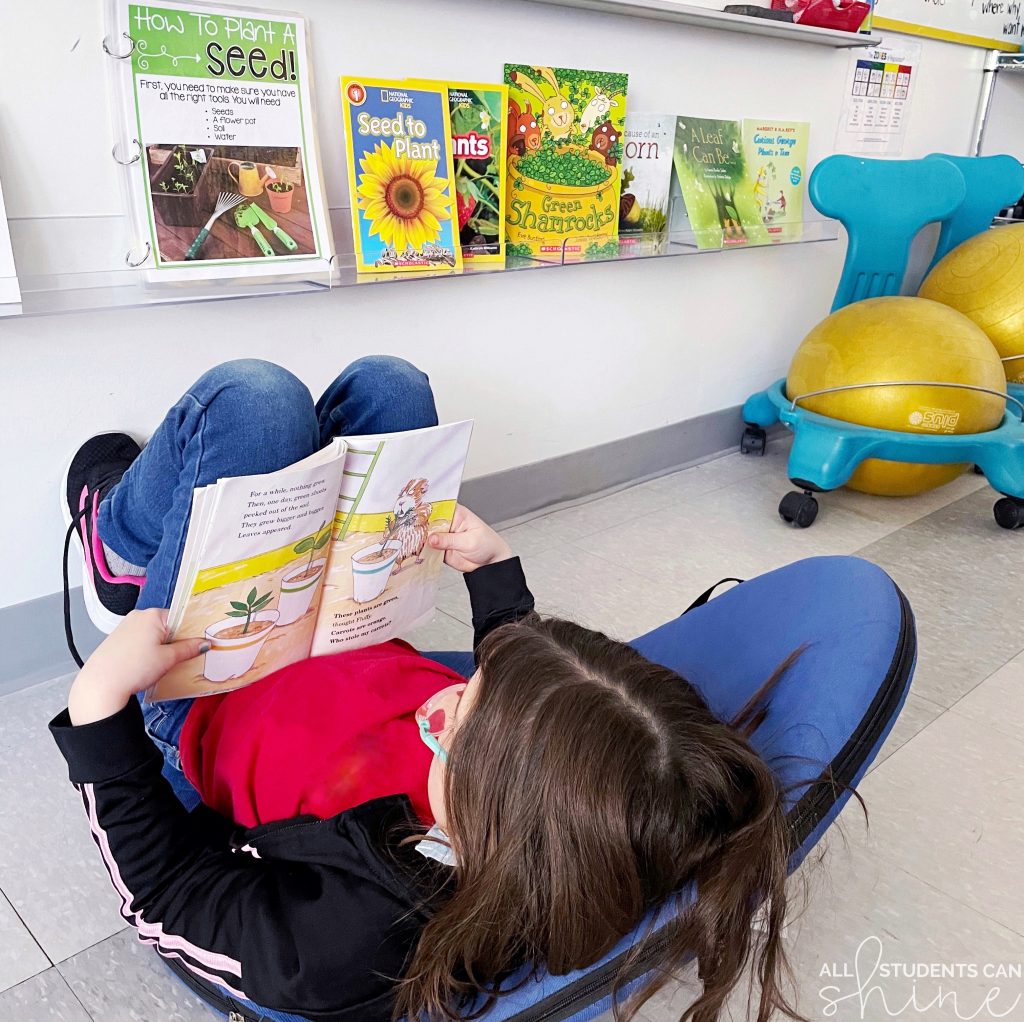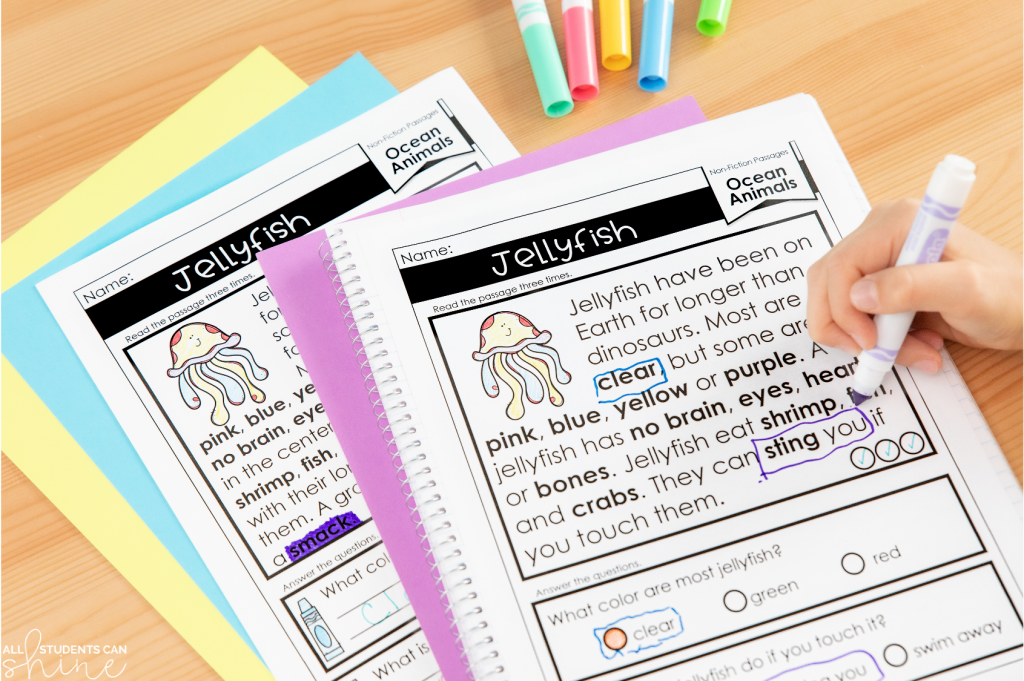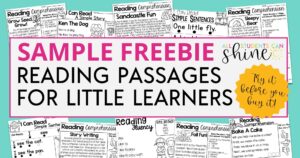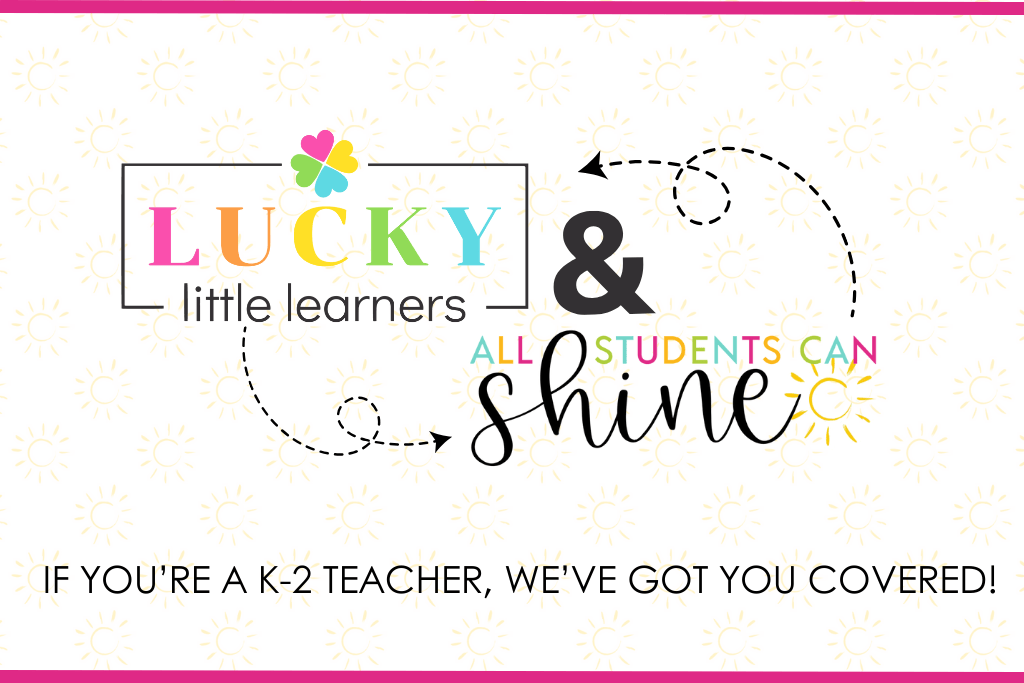Picture books and fictional stories can be so much fun to read with primary students, but it’s also important to expose kids to plenty of nonfiction passages. Becoming familiar with informational texts is an important “real world” reading skill, and it prepares students for upper elementary and secondary school when much of their reading becomes nonfiction.
Let’s take a look at why it’s so important to teach with nonfiction resources, even with our youngest students.
Nonfiction Texts Complement a Child’s Natural Curiosity
Young children are like little sponges soaking up loads of input around them. They’re curious about so many topics. How do flowers grow? What does the life of a butterfly look like? Why are there clouds in the sky? How do polar bears find food in the Arctic?
In some ways, it’s easier to convince younger children to read informational texts than it is with high schoolers! Their minds are primed and curious, especially when you take into account each child’s unique interests.

Nonfiction Passages Prepare Children for “Real Life” Reading
When’s the last time you read a book for fun? Hopefully it hasn’t been too long! But the reality is, grownups spend the majority of our time reading informational texts. News articles, instructions for the latest kitchen gadgets you’ve purchased, emails from your principal, announcements from the local government… we consume a ton of information!
By exposing children to this type of text early, we’re preparing them for success in the real world.
Secondary School Places a Large Emphasis on Informational Texts
Standardized tests and the Common Core curriculum have shifted away from literary analysis and on to more nonfiction, informational text analysis, especially at the secondary level. By teaching students how to approach these texts early on, we’re giving them a leg up for future school success.
Common Core in particular is geared toward preparing students for college and the workforce. That curriculum places an emphasis on teaching students to read informational texts like textbooks and manuals, since that’s what employers and college professors say is lacking.
Nonfiction Texts Introduce Students to a Wider Vocabulary
It’s amazing how many complex words little learners can pick up on by reading and exploring informational texts! Biodiversity, chrysalis, evaporation, plateau…
Reading informational texts with primary students not only exposes them to some pretty big ideas about the world around them, it also boosts their overall literacy. Nonfiction passages give us a chance to learn how to read graphs, diagrams, tables, and other graphic features.

A Closer Look at Nonfiction Passages for Primary Students
I’ve been hard at work developing some new nonfiction resources for teachers! The complete resource covers 6 habits, each with a passage for 5 different animals. In case you haven’t had your coffee yet, that’s thirty nonfiction passages to use with your students!

Each passage is differentiated for two different levels. Level one includes 6-7 short sentences made up of easily decodable words and age-appropriate sight words. Level two includes 9-10 longer sentences with some more complex vocabulary.
Topic-specific vocabulary words are bolded for easy identification. Students read the passage and then have two questions to answer (multiple choice for the first level and short answer for the second). They need to highlight the text evidence they used to answer the question, showing that they have understood the passage.

A Look Inside the Nonfiction Animal Bundle
Six Habitats with Five Animals Each:
- Polar Animals – Penguins, Snowy Owl, Polar Bear, Cariboo, Walrus
- Rainforest – Toucan, Blue Morpho Butterfly, Jaguar, Sloth, Tree Frog
- Ocean – Blue Whale, Lobster, Jellyfish, Sea Turtle, Seahorse
- Wetland Animals – Beaver, Dragonfly, Otter, Alligator, Heron
- Desert Animals – Coyote, Camel, Armadillo, Golden Eagle, Meerkat
- Grasslands – Lion, Zebra, Elephant, Giraffe, Rhinoceros
Download ten sample pages for free!
What are your favorite nonfiction topics to teach?
Tell me in the comments, then be sure to come visit me on Instagram or Facebook to join the conversation!






